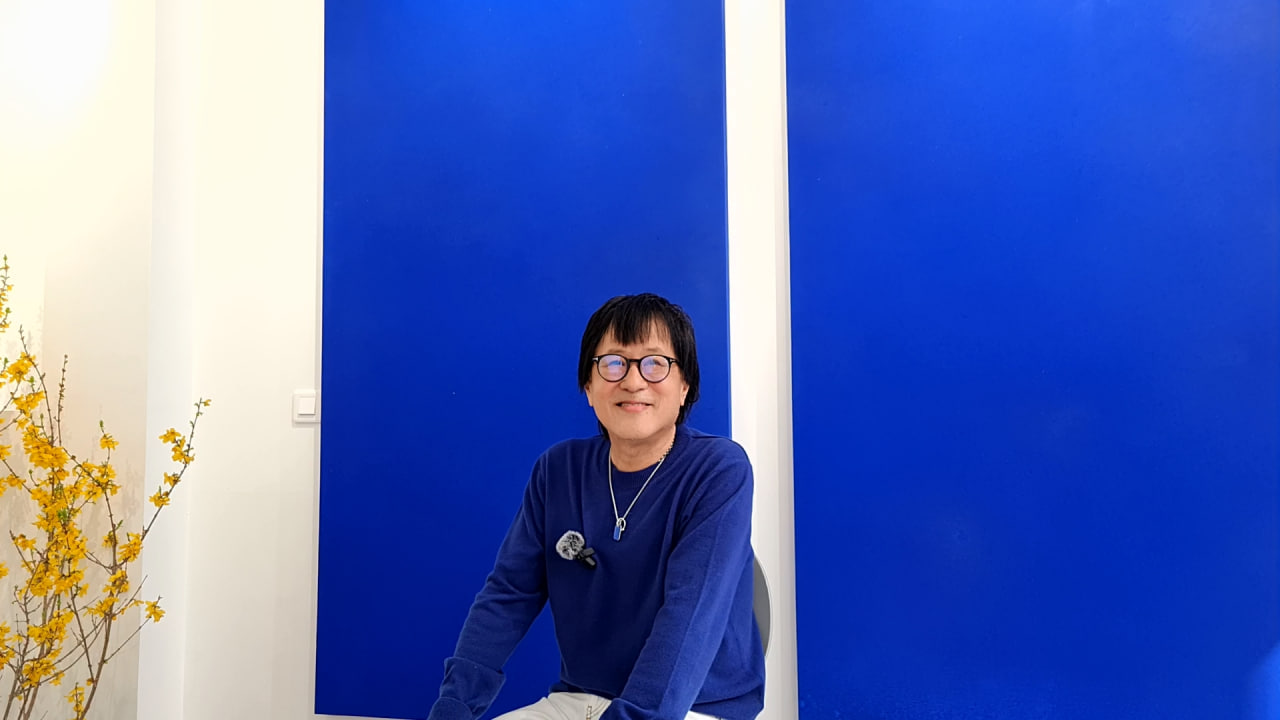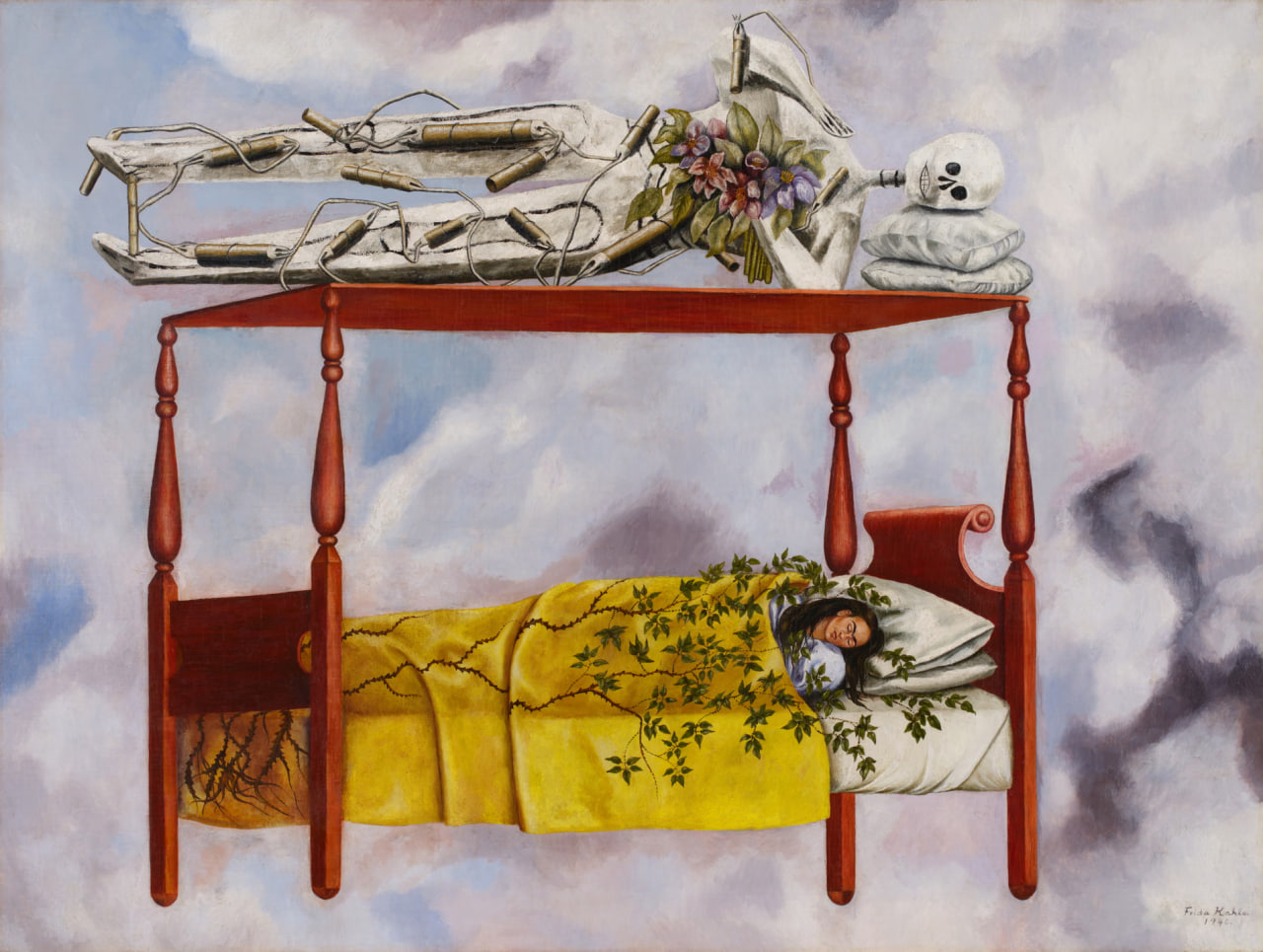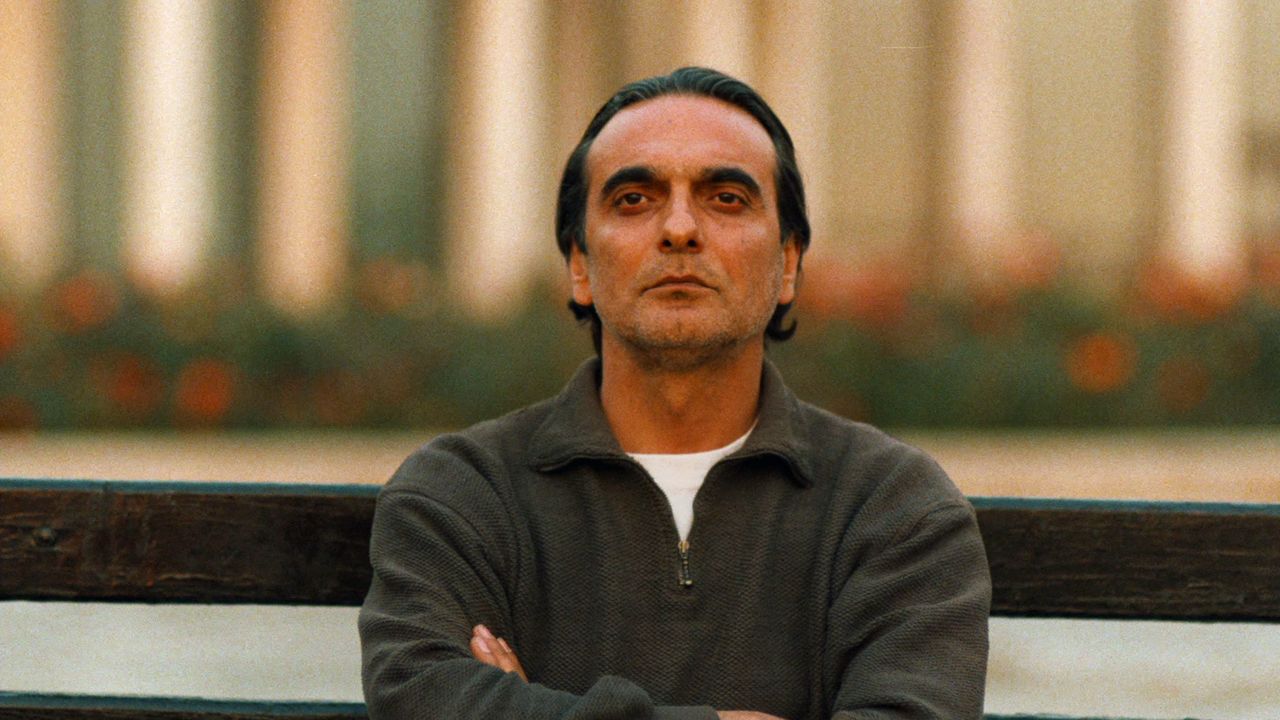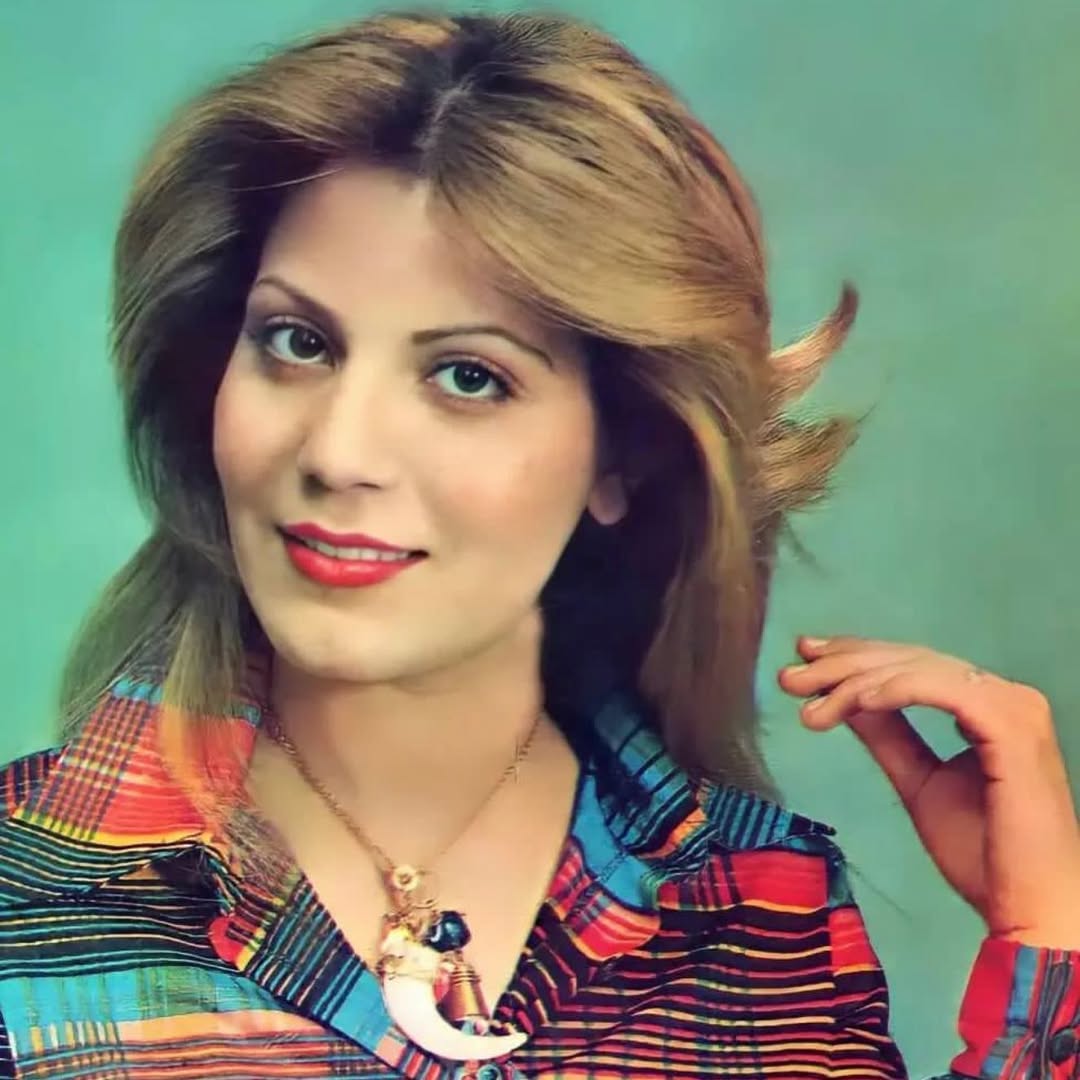On an overcast spring afternoon in April 2025, Galerie Keshavarzian in the heart of Paris opened its doors to an intimate and deeply resonant conversation with Japanese-American artist Taiji Terasaki. The occasion was his exhibition Gunjo: Celestial Butterflies, a poetic meditation on grief, transformation, and the enduring presence of love.
The conversation—filmed on location amidst Terasaki’s ethereal holographic works and mineral-pigmented panels—was hosted by Kasra Aliha, who also served as producer, with Behnood Massoumi directing cinematography for both the video and accompanying podcast, to be released on Honargardi’s official platforms. The setting itself, surrounded by the luminous glow of Terasaki’s celestial orbs, felt as much a part of the conversation as the words exchanged.
Born and raised in Los Angeles, Terasaki grew up steeped in both scientific inquiry and artistic sensitivity. With formal training in fine arts, including time in the MFA programs at Hunter College and Cal State Long Beach, his career has been marked by boundary-defying works—from mist projections to immersive installations that blend ancient Japanese aesthetics with cutting-edge technology. In Gunjo: Celestial Butterflies, Terasaki returns to his cultural and familial roots, crafting a body of work that is simultaneously personal and universal.
“This is a memorial,” he tells us, gesturing toward the shimmering spheres—gold for his father, silver for his mother, copper for his brother—each encircled by digitally-rendered butterflies, symbols of metamorphosis and continuity. “But it’s also a celebration. Of energy. Of memory. Of presence that lingers.”
The deep lapis backdrop of gunjo—a centuries-old Japanese pigment made from ground azurite—forms the atmospheric foundation of the exhibition. Terasaki’s use of traditional iwa-enogu techniques, layered over hand-treated washi paper, reveals not only a deep respect for his heritage but also an insistence on patience, craft, and the elemental. These ancient pigments, he notes, are alive: “The way light hits gunjo, how it shifts when you move, it’s like breathing.”
The artist’s embrace of transformation—both in theme and medium—is rooted in lived experience. His earlier work, Feeding the Immortals, was born of mourning after his father’s passing. Later, projects like TRANSCENDIENTS: Immigrant Stories of Place reflected his commitment to honoring the cultural mosaic of America’s immigrant communities. In Gunjo, these threads converge in a quietly radical gesture: using minimalist tradition and maximalist technology to explore the threshold between absence and presence.
The conversation ranged widely—from Terasaki’s memories of watching his grandfather restore Japanese folding screens, to his experiments with AR, vapor, and light as material. His reflections carried the same quality as his art: contemplative, luminous, never hurried. “Technology allows us to make the invisible visible,” he said, “but it’s the spirit behind the work that carries it forward.”
We would like to extend special thanks to Ms. Tannaz Keshavarzian, without whose gracious support and vision this exchange would not have been possible. Galerie Keshavarzian, under her direction, continues to offer a rare platform in Paris for artists whose practices challenge, heal, and illuminate.
The full video and podcast of this conversation with Taiji Terasaki will be released soon on Honargardi’s official website and YouTube channel. It is not only a document of a unique artistic journey but also a quiet invitation to reflect—on what we carry, what we release, and what transforms us along the way.






